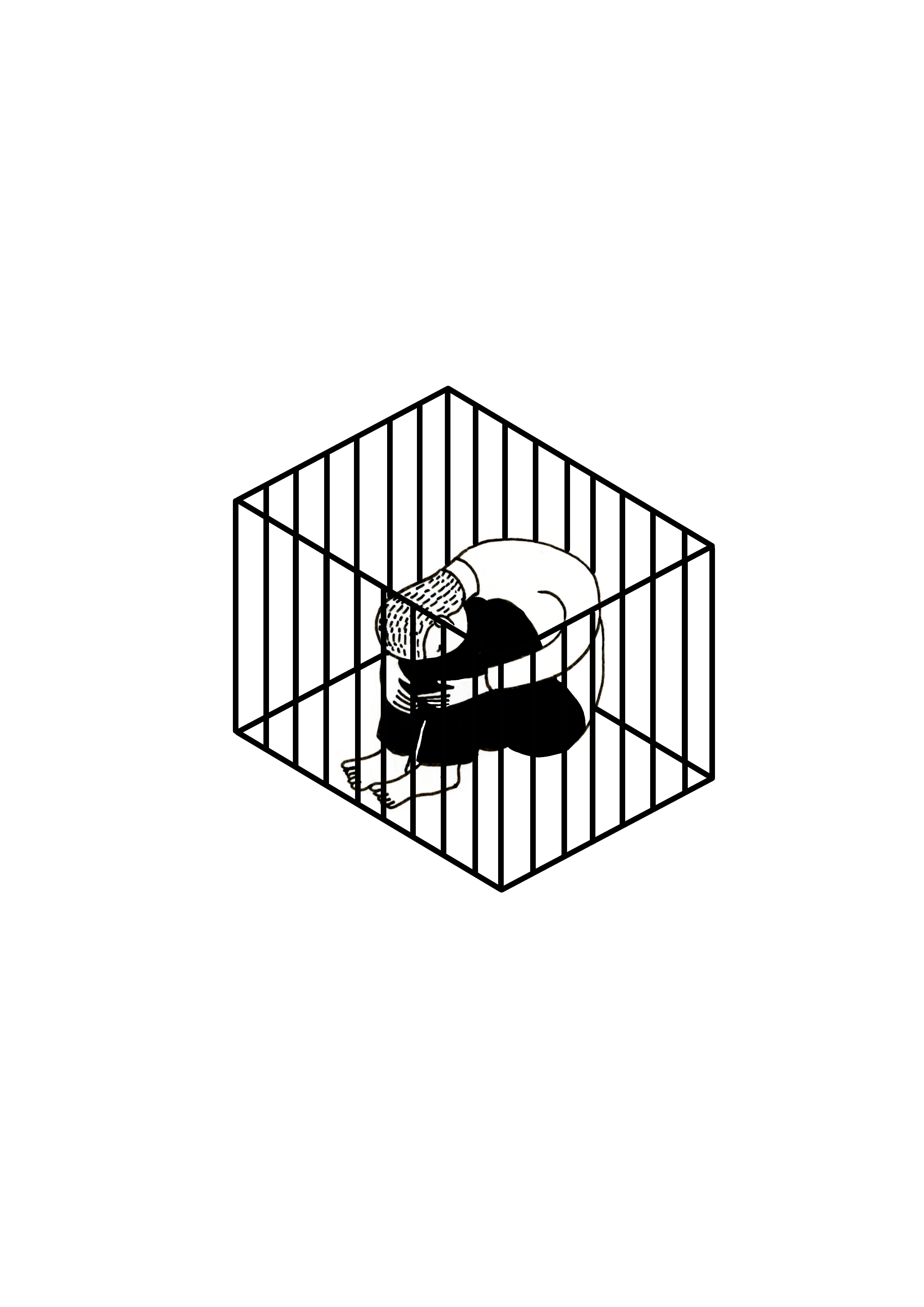
On Friday 16 December, inmates at Her Majesty’s Prison Birmingham (formerly known as HMP Winson Green) gained keys from prison officers. The first disturbances were reported early in the morning at the prison that holds 1,450 prisoners. Later, a riot broke out at HMP Birmingham, which is run by private company G4S. It took over 12 hours to get the prison riot under control, and marked the fourth prison riot in six weeks. G4S have long been criticised for their treatment of prisoners in private prisons, and this latest incident shows that these concerns are by no means unfounded.
At 10.55am, all prison officers had left N-wing where the riot started, according to local news reports. Prior to this, inmates had been on lockdown for 12 hours. It later emerged that being in lockdown for 23 hours a day was a regular occurrence because so many prison guards had left the institution. At first, G4S tried to seal off sections of HMP Birmingham to stop the disturbance from spreading. As of December 2016 G4S run five prisons across the UK. They are also subcontracted to run the healthcare at Yarl’s Wood Detention Centre, where there have been numerous allegations of sexual abuse of detainees by guards over the decades through to present day.
Yarl’s Wood has been described as a “critical issue” for women of colour. The nature of immigration centres leads them to function as prisons. They can hold you indefinitely, even though you haven’t committed a crime. December 2016 saw the tenth demonstration organised by Movement for Justice, where 2,000 supporters attended as part of an campaign to end the unlawful detention of Yarl’s Wood detainees. Other demonstrations have taken place, like a WOC Shutdown in solidarity at #ShutDownYarlsWood in March where a similar number attended.
By noon, HMP Birmingham prison was teeming with riot police, and fire engines had been called in response to large scale fires that were started by inmates. Some prisoners rang the Birmingham Mail to talk about some of the reasons they felt this was happening: brutality from prison guards, and understaffing, to name just a few.
Other inmates were evacuated out of the prison as the riot spread from one to four wings throughout the rest of the day. Smoke poured out of the building as records were burnt and fires were started. Inmates began throwing computers out of windows, and prisoners were attacked and injured during the riot, with one inmate hospitalised. Prison campaigner and academic Alex Cavendish said that the riot at the Category B men’s prison was the worst riot since Strangeways prison riot in 1990, where £90 million of damage was caused.
That afternoon, Shabina Mahmood, the MP for the local area Birmingham Ladywood, said in the Houses of Parliament that “the Government has been warned time and time again that prisons and prison staff were at breaking point”. While former Chancellor of the Exchequer, Michael Gove has announced a number of prisons will be closing. Prisons affected include HMP Brixton and HMP Reading. Despite the amount of women in prison in the UK having doubled over the past 20 years, HMP Holloway, the largest women’s prison in western Europe, is also set to close.
In 2015, 30 year old Dean Boland died of an overdose at HMP Birmingham on the detox wing, where he took drugs including banned legal high Black Mamba. An independent report into his death wrote that it was “concerned about the availability of illicit drugs on the unit at Birmingham where Mr Boland lived” and the prison had taken too long in informing his family of his death.
G4S and the Ministry of Justice continued to issue statements that varied during the day. The company referred to the riot first as a “minor”, but then as both “major incident” and ongoing “serious incident” . Neither of them used the term “prison riot” to describe what happened that day. As a last resort, the Prison Service’s Tornado squad stepped in to restore order, only to be covered in paint and pelted with objects. The West Midlands Police were then called in.
At HMP Oakwood in early 2014 (another prison that G4S runs) 20 prisoners barricaded themselves in a wing. G4S later was criticised in Parliament for calling it “concerted indiscipline” and playing the event down.
After negotiations took place at HMP Birmingham, all four wings of the prison were eventually secured. One prisoner was taken to hospital, others sustained injuries and all prison officers were accounted for. Following the riot, 500 prisoners (a third) have been moved out of the prison in a bid to stop more tensions from rising.
HMP Birmingham is 40% BME, but the population of UK prisons overall is 15% BME. According to the Young Report, published by Baroness Lola Young, there’s a greater disproportionality of black people in prison in the UK than in the USA, as black people make up 2.9% of the British population but make up 13.1% of the prison system. Muslims only make up 4.2% of the overall population, but make up 13.4% of the prison population.
The day after the riot on 17 December, Justice Secretary Liz Truss said “violence in our prisons will not be tolerated and those responsible will face the full force of the law”. She also commented that G4S should pay for the damages, but said nothing about changing the circumstances that enabled these damages to happen. This comes just six weeks after riots at HMP Bedford were caused by a staff shortage. British prisons have long suffered from understaffing over the past few years- since 2010 7,000 prison officers have left their jobs in the UK.
In an essay, prison abolition advocate and writer Angela Davis writes that “homelessness, unemployment, drug addiction, mental illness, and illiteracy are only a few of the problems that disappear from public view when the human beings contending with them are relegated to cages.” The British prison population has more than doubled in 20 years, and we have the highest rate of imprisonment in western Europe. It’s rarely acknowledged that we incarcerate people of colour at such high levels.
The Prison Industrial complex was a term used to coin a phenomena in California, where prison companies started to run prisons and the prison population expanded massively. Private prisons are reliant on a constantly expanding prison population to make money, so there’s a long term goal in constantly expanding the numbers of prisons and prisoners. In short, to quote Akala, it’s “prison for profit, that means when your kids go jail people make money off it [sic], so keep environments that breed crime, and build more jails at the same time”. For example, North Wales will soon be home to the first USA-style “super prison” called HMP Berwyn that will hold 2,100 people. It’s being built right now and will open in early 2017. It will be run by Her Majesty’s Prison Service, but just over a third of its services will be contracted out to private organisations.
On the evening of Sunday 18 December, reports emerged of unrest on C-wing, and an ambulance was called to HMP Birmingham because a prisoner wasn’t breathing. HMP Hull was put on lockdown after 15 inmates were transferred there from HMP Birmingham. Numerous other prisons like HMP Cardiff had had disturbances. This all is linked through the failure of privatised prisons like Birmingham forcing prisoners to move in an already strained system. The UK prison system has been overcrowded since 1994 , but our prison population has grown hugely since. A growing prison industrial complex allows a climate of normalisation around private prisons. It allows the work to be undertaken by the likes of G4S to be normalised, a company whose cost-cutting approaches have forced a riot at HMP Birmingham.
Private and public prisons are at breaking point. When G4S run five jails and contracts are given to the likes of Serco to run Yarl’s Wood, it’s little wonder there have been five prison riots over the past month and a half. A riot broke out on 23 December at HMP Swaleside where 60 prisoners took over a wing in Kent, leading to the removal of 230 prisoners. There will probably be more prison riots, and more prisons will be privatised under the prison industrial complex by huge corporations. Institutional racism has meant that prisons and the prison industrial complex are affecting people of colour more than other groups. People of colour are more likely to be put into prison and policed as perpetrators of crime. It also means that POC (and especially black people) are more likely to be victims of crime than other groups but don’t receive the same support from the police. With PoC being systematically over-policed as perpetrators and under-supported as victims, is it any wonder that one of the greatest injustices in Britain today is our own prison system itself?









